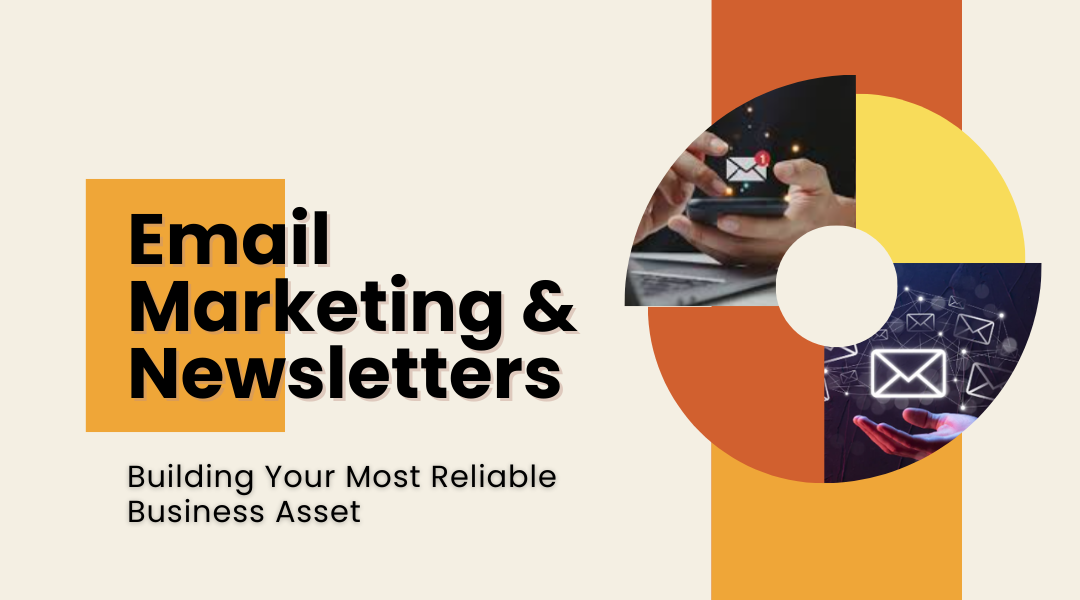Social media can be fickle. Platforms rise and fall, algorithms shift overnight, and yesterday’s viral post is forgotten by morning. But your email list? That’s yours. It’s an asset no one can take away—a direct line of communication with people who’ve chosen to hear from you.
For busy moms (or anyone balancing work and family life), email marketing is one of the most dependable ways to grow a side business. You don’t need to spend hours posting content every day. With the right setup, a well-crafted email list can quietly build trust, create steady sales, and run on autopilot while you’re folding laundry or waiting in the school pickup line.
Why Your Email List Is Your Digital Safety Net
Think of your email list as your “home base” online. Social media may bring people through the front door, but your emails are where real conversations—and real business—happen. Here’s why it matters so much:
- You actually own it. Unlike Instagram or TikTok, where one update can wipe out your reach, your list is yours forever. You can export it, move it to another platform, and continue building relationships without fear of losing your audience.
- Subscribers are warmer leads. They’ve already raised their hand and said, “I want to hear from you.” That means they’re far more likely to click, buy, and trust your recommendations.
- It’s where sales happen. Email consistently outperforms social media when it comes to conversions. Whether you’re selling a $9 printable or a $150 coaching session, email is where people open their wallets.
- Size doesn’t matter as much as you think. A small, engaged list of 250 people can bring in steady income if your offers solve real problems.
Instead of chasing likes or trying to beat algorithms, you’re building a stable foundation of people who genuinely want what you’re offering.
Creating Irresistible Lead Magnets
The best way to grow your list is by offering something free in exchange for an email address—a “lead magnet.” The trick? Keep it useful, simple, and directly related to what you eventually want to sell.
Fresh ideas for lead magnets:
- A 10-minute meal planner for moms who want stress-free weeknight dinners.
- A quick-start budget worksheet for families looking to save more.
- A mini-guide on styling thrifted home finds for DIY lovers.
- A “Top 12 Free Tools for Side Hustlers” PDF for creative entrepreneurs.
You don’t need weeks to create these. Tools like ChatGPT, Canva, or Notion can help you pull ideas together in an afternoon. Then, connect your freebie to a signup form on your website, Etsy shop, or even directly from your Instagram bio.
Turning Subscribers Into Customers
Getting people on your list is only the beginning—the real magic happens when you start serving them with consistent value. Over time, they’ll look forward to your emails, trust your expertise, and be ready to invest in what you offer.
Ways to earn from your list:
- Sell your own products. Think e-guides, digital journals, printables, or online workshops.
- Promote affiliate products. Love a particular course, app, or tool? If it has an affiliate program, you can earn commissions by recommending it.
- Offer services. From freelance design to virtual assistance or coaching sessions, email is one of the best ways to book clients.
- Create a paid newsletter. Platforms like Substack let you deliver premium content—exclusive recipes, tutorials, or business strategies—for a monthly fee.
The key is to start by helping, not selling. Share tips, solutions, and inspiration so your readers feel supported. Then position your product, service, or affiliate offer as the natural next step.
How Automation Saves Your Sanity
You don’t need to sit down and write new emails every single week. Instead, create a handful of strong ones and set them to go out automatically when someone subscribes.
Here’s what to set up:
- A welcome sequence (3–5 emails): Introduce yourself, share your story, give something valuable, and naturally explain what you offer.
- Seasonal or evergreen promos: Plan emails in advance for holiday sales, product launches, or affiliate promotions.
- Regular updates: A once-a-week or twice-a-month newsletter with tips, stories, or resources keeps people connected without overwhelming you.
AI tools can make the writing easier. Use them to brainstorm subject lines, outline a welcome series, or polish product launch emails. For example:
- “Write a 4-email welcome sequence for new subscribers interested in budget-friendly meal prep.”
- “Give me 7 subject line ideas for a digital printable bundle launch.”
Once written, load them into an email platform like MailerLite, ConvertKit, Mailchimp, or Flodesk—and let the automation handle the rest.
Substack vs. ConvertKit: Picking Your First Platform
If you’re brand new to email marketing, two tools stand out:
- Substack: Best for writers, storytellers, and lifestyle content creators. It feels like blogging meets email. You don’t need a website, and you can even monetize with paid subscriptions. Great if you love sharing personal stories, creative tutorials, or weekly reflections.
- ConvertKit: Ideal for business growth. It offers landing pages, automation, product sales, and advanced segmentation. Perfect for creators who want to sell digital products, grow funnels, and scale beyond a simple newsletter.
Both have beginner-friendly free plans, so you can experiment without stress.
Final Thoughts
An email list isn’t just a marketing tool—it’s a business lifeline. While social media is noisy and unpredictable, email gives you a quiet, steady way to build trust and grow income over time. Even if you only spend a few hours setting it up, it can continue working for you in the background for years.
Start small: create a simple lead magnet, write a short welcome sequence, and choose a platform that feels manageable. With time, your list will become one of the most valuable assets you own—a community of people who know you, trust you, and are excited to hear from you.
